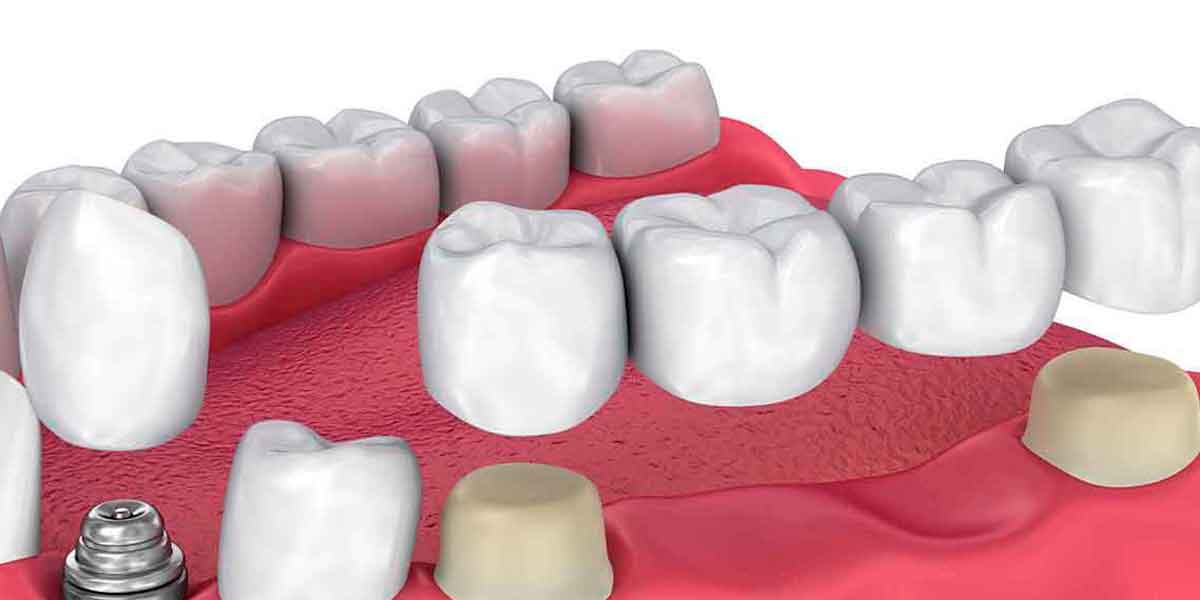Dental implants and bridges are two common options for individuals seeking to address missing teeth. While both treatments aim to restore functionality and aesthetics, they vary in terms of procedure, longevity, and overall benefits. This article will compare dental implants and bridges to assist individuals in determining which treatment may be more suitable for their dental needs.
Understanding Dental Implants
Dental implants serve as artificial tooth roots typically made from biocompatible materials like titanium. These implants are surgically inserted into the jawbone, where they gradually fuse with the bone, providing a stable foundation for a replacement tooth, bridge, or denture.
Procedure for Dental Implants
The process of obtaining dental implants involves several stages:
Initial Consultation: The dentist evaluates your oral health and bone density to assess your candidacy for implants.
Surgical Placement: The implant is surgically positioned into the jawbone under local anesthesia.
Osseointegration: Over a few months, the implant integrates with the jawbone, establishing a sturdy base.
Abutment Placement: An abutment is affixed to the implant, linking it to the replacement tooth.
Final Restoration: A custom-made crown, bridge, or denture is attached to the abutment.
Benefits of Dental Implants
Durability and Longevity: With proper care, dental implants can last a lifetime.
Natural Appearance: Implants closely resemble natural teeth in both look and feel.
Preservation of Jawbone: Implants help stimulate the jawbone, preventing bone loss.
No Impact on Adjacent Teeth: Implants do not require altering neighboring teeth.
Understanding Dental Bridges
Dental bridges are fixed prosthetic devices designed to replace one or more missing teeth by anchoring to adjacent natural teeth or dental implants. Typically, a bridge consists of one or more artificial teeth (pontics) held in place by crowns on neighboring teeth.
Procedure for Dental Bridges
The process of obtaining a dental bridge includes the following steps:
Initial Consultation: The dentist assesses your oral health and recommends the most suitable bridge type.
Tooth Preparation: Adjacent teeth are reshaped to accommodate the supporting crowns for the bridge.
Impressions: Impressions of your teeth are taken to create a personalized bridge.
Temporary Bridge: A temporary bridge is placed while the permanent bridge is being fabricated.
Final Placement: The custom-made bridge is fitted, adjusted, and cemented into place.
Benefits of Dental Bridges
Quicker Process: Bridges typically involve fewer appointments and less healing time compared to implants.
Effective Solution: Bridges effectively restore function and aesthetics.
Cost-Effective: Bridges are generally more affordable than implants initially.
Non-Surgical Option: Bridges do not require surgery, making them suitable for patients unable to undergo implant surgery.
Comparing Dental Implants and Bridges
Both dental implants and bridges have their advantages and limitations. Here are some key factors to consider when deciding between the two:
Durability and Longevity
Dental implants are renowned for their durability and longevity, potentially lasting a lifetime with proper maintenance. In contrast, bridges may require replacement every 10 to 15 years due to wear and tear or changes in supporting teeth.
Aesthetics and Functionality
Both implants and bridges can provide natural-looking results. However, dental implants often offer superior aesthetics and functionality by closely mimicking natural teeth. Bridges can also appear natural but may not feel as natural as implants.
Impact on Adjacent Teeth
Dental implants have no impact on adjacent teeth, whereas bridges necessitate reshaping neighboring teeth to support the bridge. This reshaping can weaken the teeth and make them more vulnerable to decay and damage.
Bone Preservation
A significant advantage of dental implants is their ability to preserve the jawbone by stimulating bone growth, preventing the bone loss typically seen after tooth loss. Bridges do not offer this benefit, potentially leading to deterioration of the jawbone under the missing tooth over time.
Cost Considerations
Initially, dental implants may be more costly than bridges. However, considering their longevity and the potential need for bridge replacement in the future, implants could be more cost-effective in the long run. It is essential to weigh both short-term and long-term costs when making a decision.
Surgical vs. Non-Surgical
Dental implants require surgery, which may not be suitable for everyone, particularly individuals with specific medical conditions or inadequate bone density. Bridges, being a non-surgical




